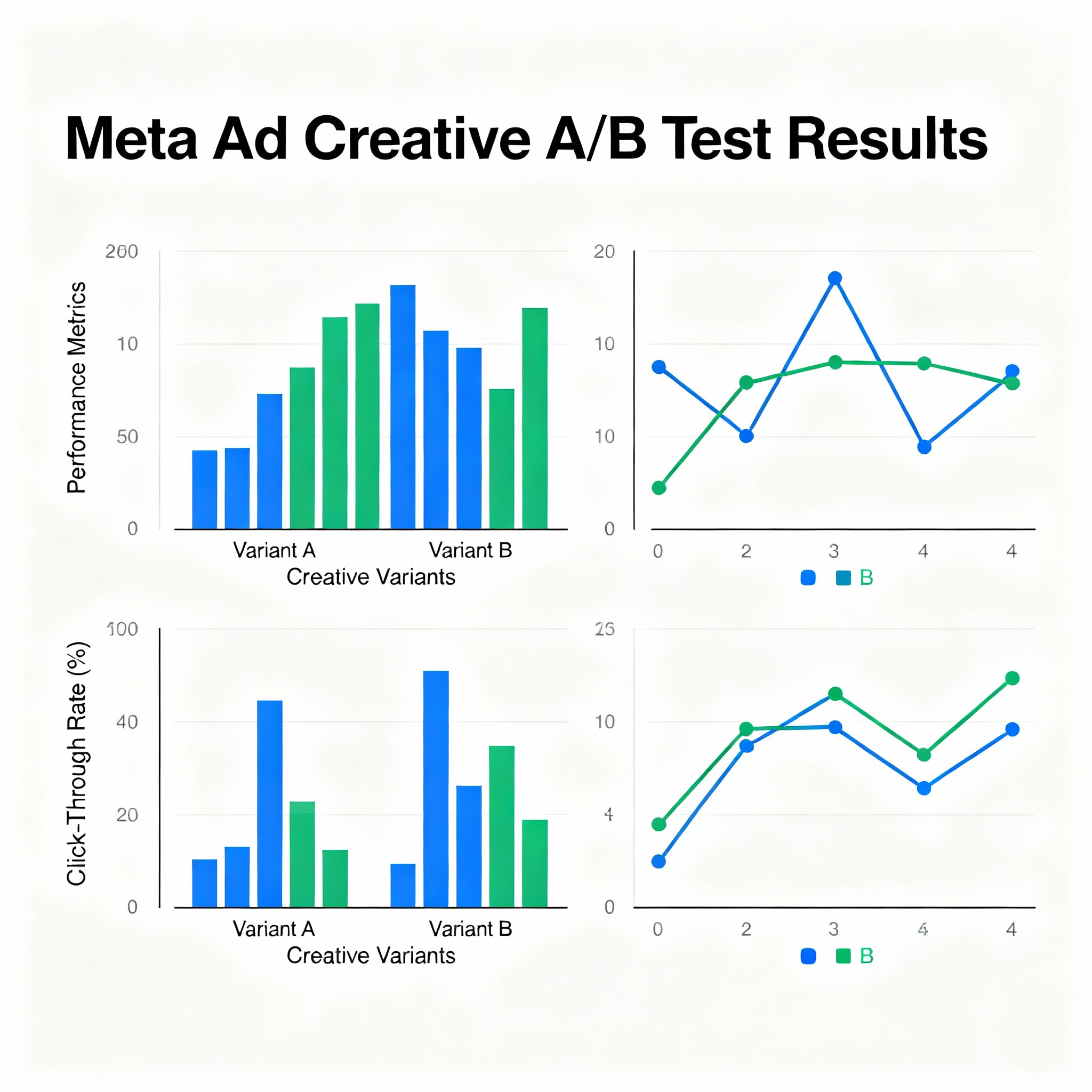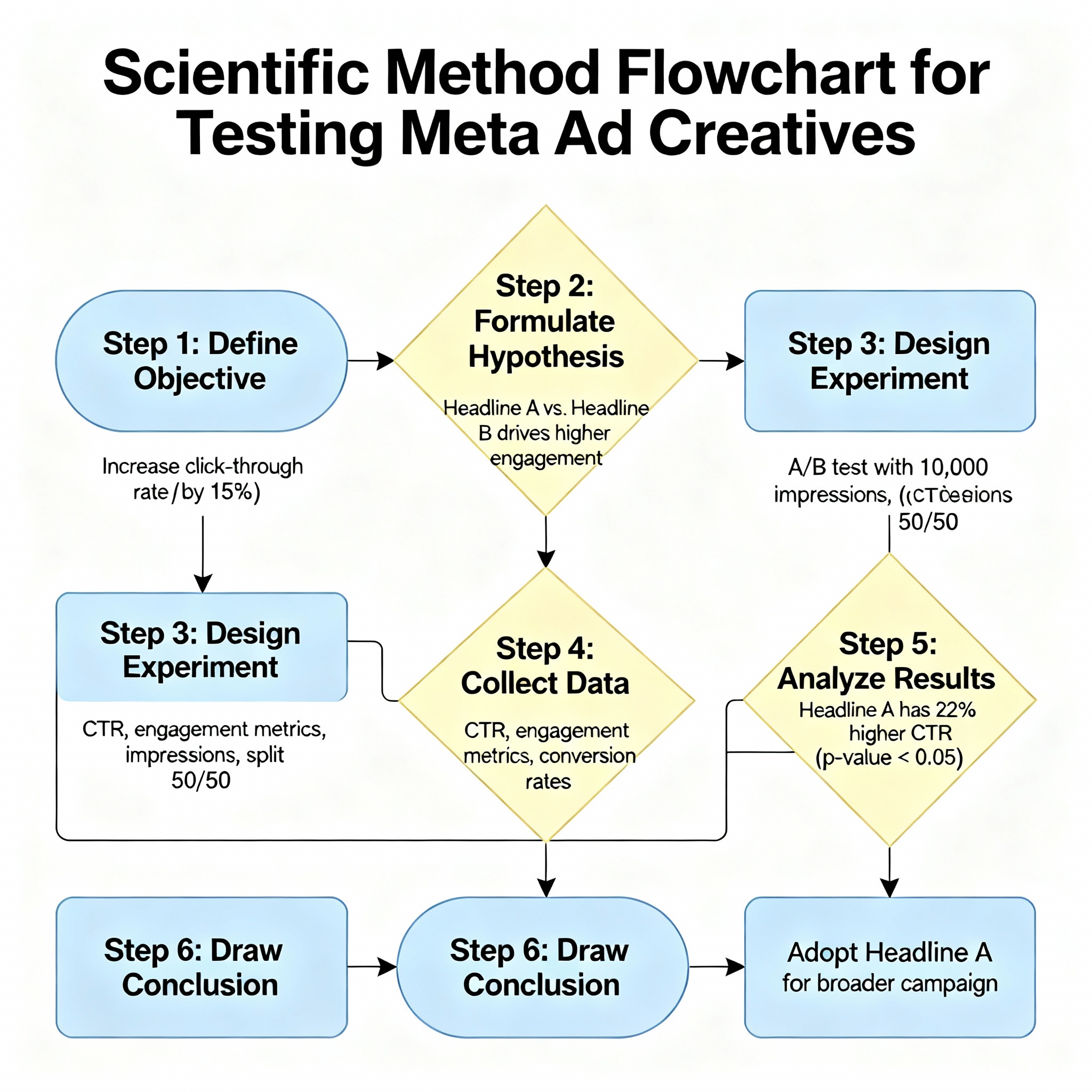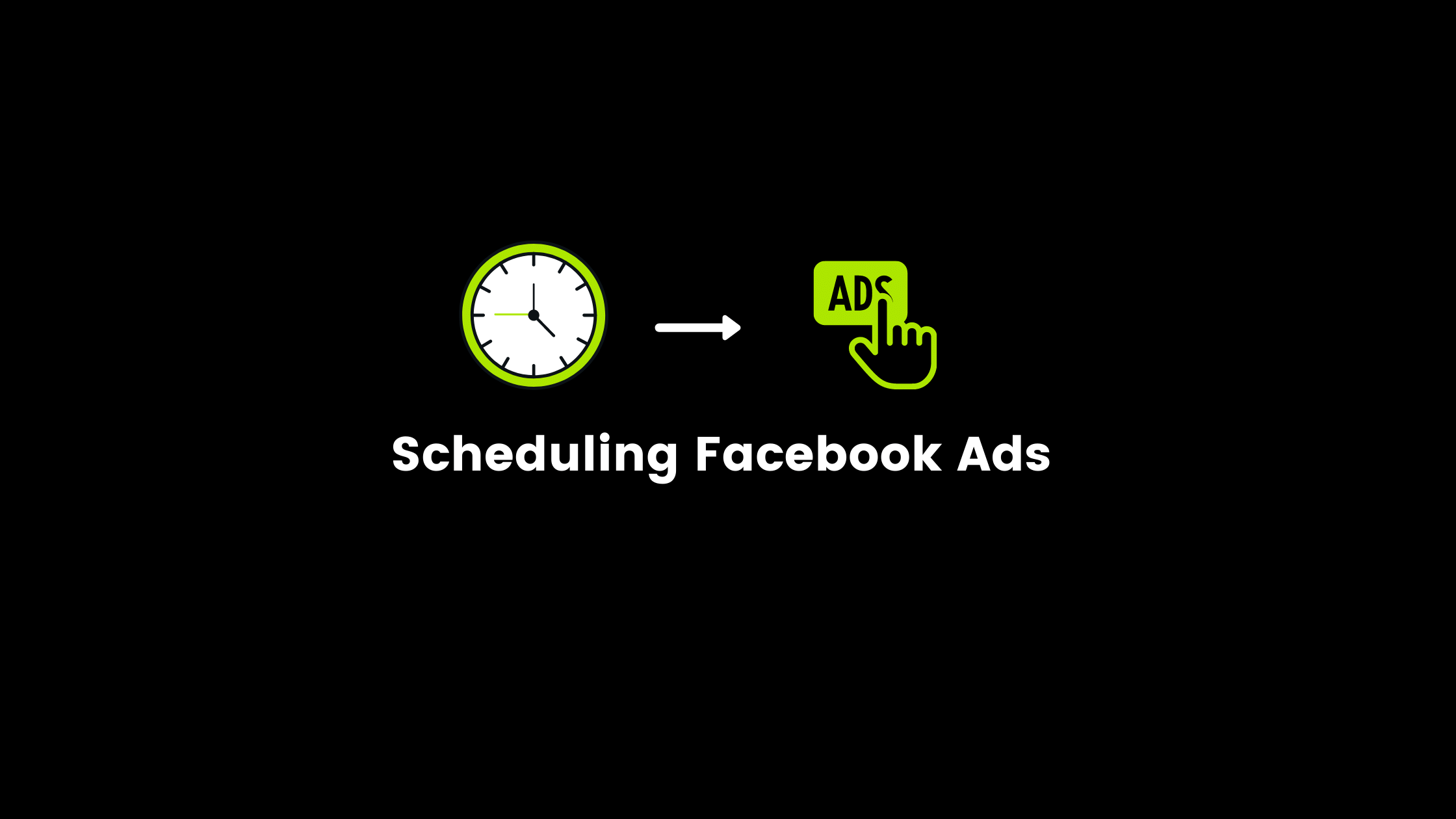
Why Creative Testing Matters More Than Ever
Recent studies confirm that creative quality determines 75% of advertising impact and is responsible for almost half of incremental sales driven by advertising. Meta’s own data shows that compelling creative can give advertisers an edge in auction-based advertising, even with lower budgets, creating a cycle of outperforming competitors and achieving higher ROI.
The world’s most successful brands demonstrate this principle in practice. HiSmile runs over 8,800 active ads, while Lumen maintains 410 ads in their library, constantly testing and replacing underperforming creatives. This level of creative iteration isn’t accidental- it’s the foundation of scalable Meta advertising success.
The Scientific Framework for Creative Testing
1. Test One Variable at a Time
The cornerstone of scientific creative testing is isolating variables to ensure reliable results. When testing creatives, maintain consistent audiences, copy, links, and all other settings. This approach allows you to identify exactly what drives performance differences.
Best practices for variable isolation:
-
If testing audiences, keep all creatives identical
-
When testing creatives, maintain the same audience settings
-
Avoid changing multiple elements simultaneously
-
Approach testing scientifically for reliable, actionable insights
2. Group Similar Creative Formats
Meta’s algorithm tends to favour specific creative formats in this order: Dynamic Catalogue> Reels > Carousels > Static Images. To ensure fair evaluation, group similar formats together- static images with other static images, videos with videos. This prevents Meta from automatically favouring one format over another and provides true creative performance comparisons.
CBO vs ABO: Choosing the Right Budget Strategy
The choice between Campaign Budget Optimization (CBO) and Ad Set Budget Optimization (ABO) significantly impacts your creative testing results.
When to Use ABO for Creative Testing
ABO is ideal for:
-
Testing new creatives fairly with equal budget allocation
-
Smaller budgets under INR 500 daily
-
Situations requiring granular control over spend distribution
-
Initial creative testing phases where you need clear performance data
ABO ensures each creative receives adequate spend for meaningful evaluation. As one successful e-commerce advertiser noted: “ABO testing allows each creative a fair opportunity to shine, while CBO often favors ads with existing performance history”
When to Use CBO for Creative Testing
CBO works best for:
-
Budgets exceeding 10-15 times your target cost per acquisition
-
Scaling proven creatives after initial ABO validation
-
Campaigns where optimisation speed matters more than learning
-
Advanced testing with established performance baselines
Critical CBO insight: Set your testing budget at least 15 times your target CPA to ensure Meta distributes spending more evenly across creatives rather than favouring established performers.
Advanced Creative Testing Strategies
The INR 1000 Testing Plan
This proven framework delivers reliable results with minimal budget :
Setup:
-
5 ad variations at INE 200 each = INR 1000 total budget
-
Same audience, campaign structure, and bid strategy
-
Run for exactly 3 full days without early adjustments
-
Cut losing ads after 48 hours to prevent budget waste
Why this works: Meta’s AI quickly identifies strong creatives when given proper test conditions. The structured approach reveals winners while minimising testing costs.
Dynamic Creative Testing (DCT)
DCT automatically tests different combinations of images, videos, headlines, and calls-to-action, creating personalised ad versions that match individual user preferences. This method excels at:
-
Personalisation: Automatically creates relevant ad combinations
-
Time efficiency: Automates the creative variation process
-
Data insights: Reveals which creative elements drive performance
DCT considerations: The algorithm may favour proven ads over new concepts, potentially limiting breakthrough creative discovery.
Advantage+ Shopping Campaigns (ASC)
For e-commerce brands, ASC manages up to 150 different ad elements while automatically optimising delivery based on performance. This approach works exceptionally well for brands with extensive product catalogues and sufficient creative libraries.

Building a Systematic Testing Calendar
Successful creative testing requires structured planning to balance innovation with optimisation:
Week 1: Net-New Creative Testing
-
Launch 3-6 completely new ad concepts from production
-
Test different angles, formats, and messaging approaches
-
Focus on breakthrough creative discovery
Week 3: Remix Testing
-
Based on Week 1 learnings, test variations of top performers
-
Modify successful elements while maintaining core appeal
-
Optimize proven concepts for maximum performance
Ongoing: Performance Monitoring
-
Track creative fatigue indicators (declining CTR, rising CPM)
-
Rotate fresh creatives into scaling campaigns
-
Maintain creative pipeline for consistent performance
Avoiding Campaign Volatility
Campaign volatility often results from improper testing practices. Follow these guidelines to maintain stable performance:
Budget Management
-
Set adequate budgets to achieve 1-2 conversions per ad set daily
-
Use your average cost per purchase to guide budget decisions
-
For INR 500 average purchase costs, allocate INR 1000-1500 daily budgets for reliable optimisation data
Testing Duration
-
Run tests for a minimum of 7 days for meaningful results
-
Allow sufficient time for Meta’s learning phase completion
-
Resist the urge to make premature optimisations based on early data
Data-Driven Decisions
-
Aim for 50 optimised events per test for statistical significance
-
Focus on meaningful performance differences, not minor fluctuations
-
Document learnings to inform future creative development
Measuring Creative Testing Success
Track these key metrics to evaluate creative testing effectiveness:
Primary Metrics:
-
Cost Per Result (CPR): Lower CPR indicates more efficient creatives
-
Click-Through Rate (CTR): A Higher CTR shows creative resonance
-
Conversion Rate: Measures a creative’s ability to drive actions
-
Return on Ad Spend (ROAS): Overall profitability indicator
Secondary Metrics:
-
Relevance Score: Meta’s assessment of creative quality
-
Frequency: Monitor for creative fatigue indicators
-
Engagement Rate: Social proof and viral potential
Implementation Checklist
Transform your creative testing with this actionable framework:
✅ Setup Phase:
-
Define a clear testing hypothesis
-
Choose an appropriate budget strategy (ABO vs CBO)
-
Group similar creative formats together
-
Set adequate budgets for meaningful data
✅ Execution Phase:
-
Test one variable at a time
-
Run tests for minimum duration
-
Monitor performance without premature optimization
-
Document all learnings systematically
✅ Optimization Phase:
-
Scale winning creatives to broader campaigns
-
Create remix variations of top performers
-
Plan next testing cycle based on insights
-
Maintain creative rotation schedule
Meta ad creative testing in 2025 requires scientific rigor combined with creative innovation. By implementing these proven strategies from proper budget allocation to systematic testing frameworks- you’ll identify winning creatives faster while avoiding the costly volatility that plagues amateur advertisers.
The brands that master this balance between testing discipline and creative boldness will dominate Meta’s advertising landscape in the year ahead. Start implementing these strategies today, and watch your creative testing transform from guesswork into a predictable growth engine for your business.
-


